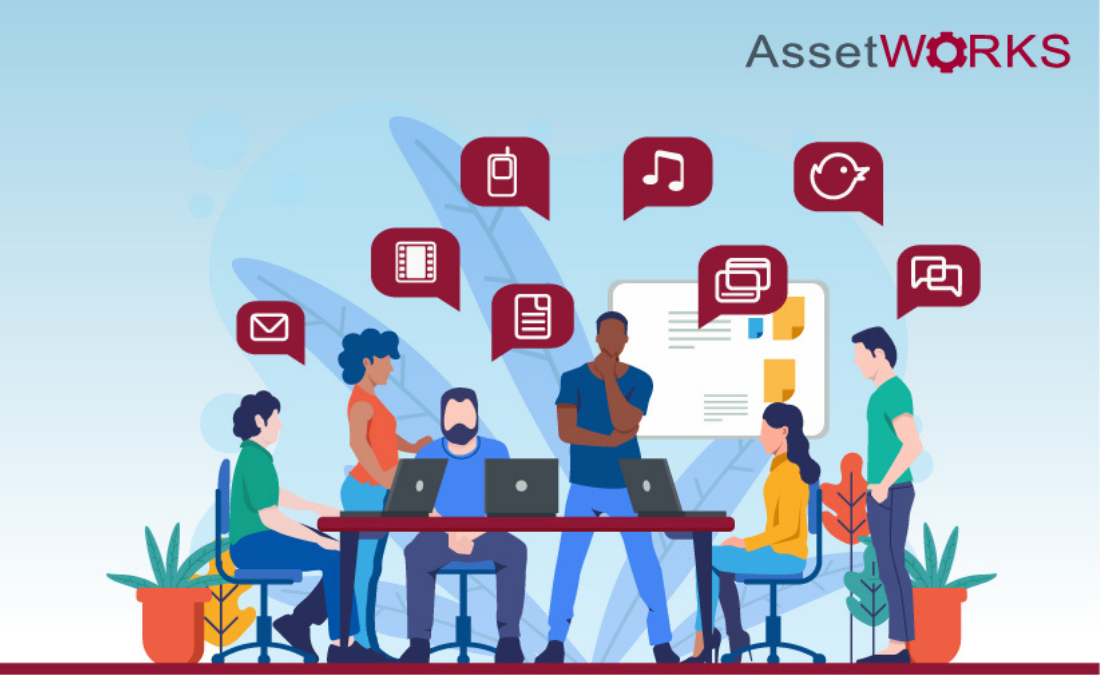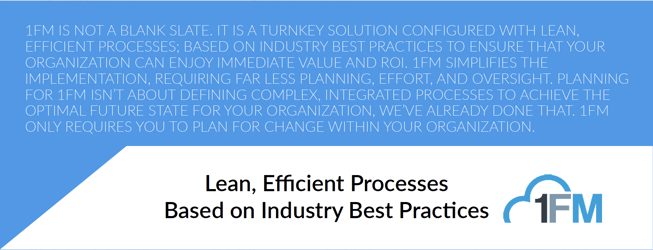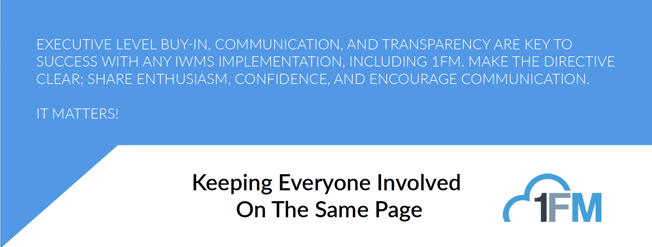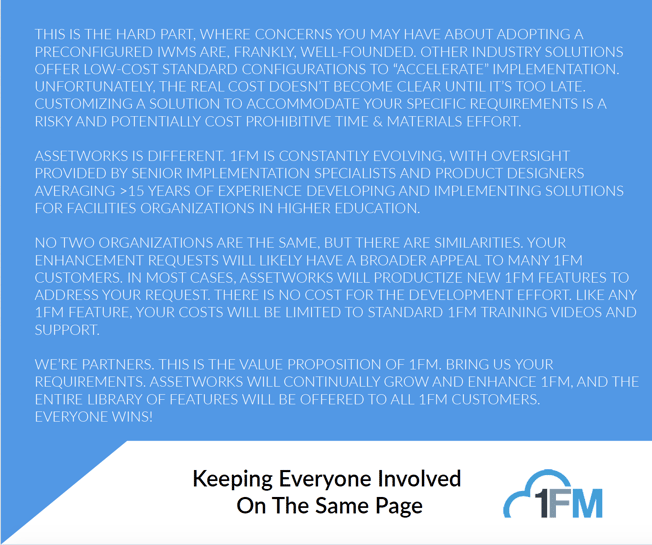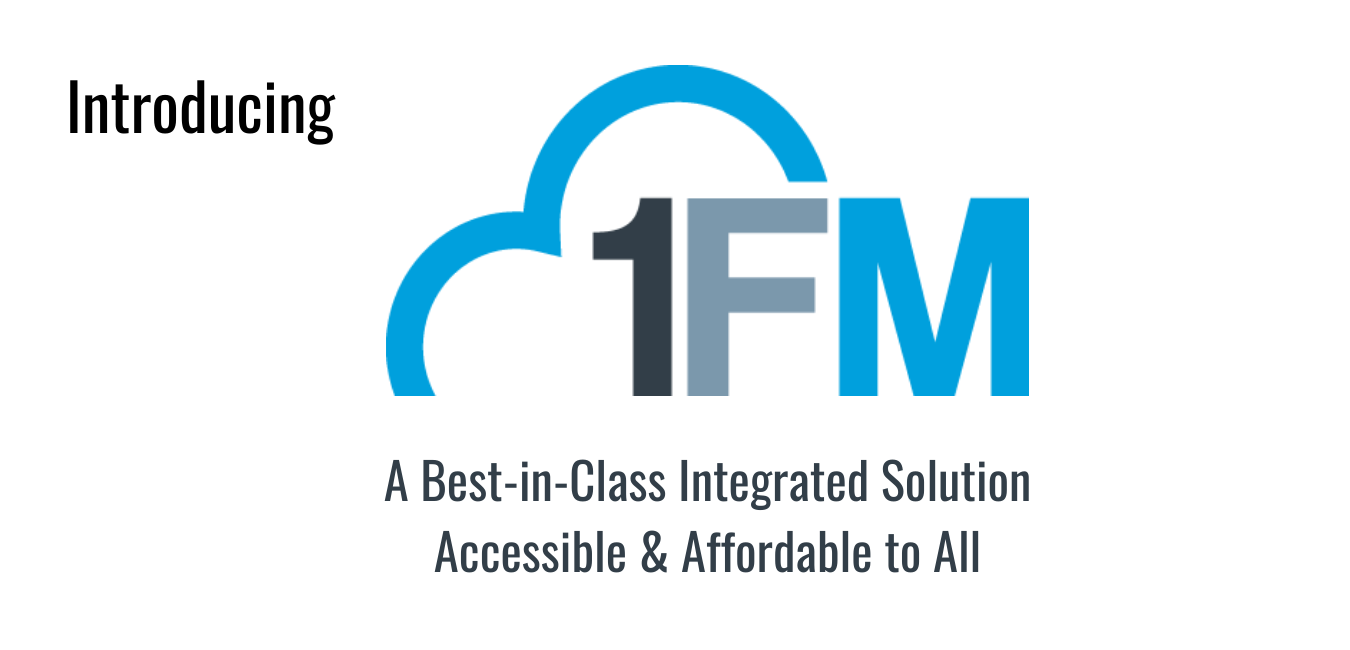Part 2: Featuring the APPA Award-Winning Team at Oklahoma State University
QUICK SUMMARY
In Part 1 of the story, we covered that many facilities executives invest in an IWMS with the expectation that it will transform their department into a more efficient, streamlined organization with valuable metrics and financial reporting at their fingertips. These are results you can expect, especially with careful planning, review and consideration of existing processes, a time investment from key individuals, and total support from your leadership team to help ensure success with implementation.
Let's see how Jenelle and her OSU Facilities Team developed an executable plan to keep the project on time and on budget.
PLANNING
Project planning activities concentrate on developing an executable plan to keep a project on time and on budget. An IWMS is essentially a blank slate that will be implemented by several contributors with varying objectives, levels of expertise, and priorities. So, proper planning requires much more than a project plan. We need a bridge. Without one, your implementation is in genuine danger of schedule overruns, cost overruns, and unsatisfactory outcomes. So how do we build that bridge?

3. Find your Champion
Executives don't ordain a true project champion. Project champions are the individuals in your organization, the often-unrecognized rock stars who keep things moving forward. Our project champions inherently get what the organization is today, where it's going, and how we aim to improve it. They understand the granular as-is processes, touchpoint's across teams and departments, operational details, and how they all fit together. A project champion is deeply committed to the organization and heavily invested in its success.
Wheless: "One of the things I enjoyed most about these types of projects was finding project champions. There's at least one in every organization, and it's not always whom you'd expect. Sometimes it was, predictably, a director or business manager. Other times it would be a shop/team supervisor, space planner, lead skilled trades worker, call center manager, a C-Level executive, or even a student assistant. The job title didn't matter, it was always about finding the individuals, and convincing leadership to empower those few to carry the
implementation forward."
Feddersen: (Before NEXT LEVEL) "We implemented a solution in 2011 when I wasn't on the team. I was a person that was going to be helping the team once they got going. But it didn't go well, and people weren't coming to meetings. They weren't showing up. The (then) Director of Business Operations came in, and he said, ‘Do you think you can help me?’".
Wheless: "It's interesting to hear Jenelle's story. During my first visit with OSU, though Jenelle was soft-spoken and overshadowed by many dominating voices in the room, I knew that she was their project champion immediately. Jenelle calmly and patiently answered everyone's questions and gently clarified other people's answers. She provided much-needed insights about the organization, its struggles, and opportunities. I did sense some frustration; she'd been involved in a 2011 implementation but wasn't properly empowered to be the change agent the organization needed."
Feddersen: (on project champions) "James Rosner then Director, Utilities and Energy Management, was assigned the role of NEXT LEVEL Software Reimplementation Champion. A novice with the software system but with a clear understanding of the expectations of OSU upper management, James learned the software functionality to push the change management envelope. This provided an ally within the executive sponsorship. Other directors were instrumental project champions of their assigned project areas, which allowed for greater success of this software implementation. Ron Tarbutton was the Director of O&M at that time. O&M is the largest department within Facilities Manager, and is faced with much of the change. He was tasked with making organizational changes that would taken advantage of what the software offers. For software setup, he focused on shop reconfiguration, naming, going through a list of work codes, and validating the list with managers. Steve Dobbs, Director of Grounds, stepped in to make decisions on how we were going to track his work, what it was going to look like, and how we were going to divide up grounds parcels so he could understand how much it would cost to maintain campus grounds. Renee Smith, the Manager of Procurement Services at the time, was instrumental in connecting with our customers to determine how best to improve our communication with them. She was able to work with them to clarify specific customer pain points that we could improve. Marla Boles, Manager of Administrative Operations, was also instrumental in keeping meetings on topic, documenting decisions, and providing project updates to executive staff."
4. Keep Everyone In The Know
Every person in your organization will be impacted by organizational change and a new IWMS. As we initiate big changes, the little things we do to bring people into the fold (and keep them there) will make all the difference. OSU Facilities Management planned a series of "All-Hands" meetings during the NEXT LEVEL implementation to keep employees informed and reinforce a positive message about the changes.
Wheless: “When Vice President Joe Weaver addressed the entire facilities organization and set the stage for what would be a 13-month reorganization and IWMS implementation, it was a game-changer. With this level of executive engagement, spot-on messaging, and open communication lines, I knew the project would be successful”.
Feddersen: "Transparent communication was key. With VP Weaver's leadership…I feel like that was a big show of faith as well; it was really big in my mind because people felt safe. The employees felt safer about taking the leap; they knew the administration was backing them. They didn't feel set up to fail."
5. Connect the Dots
An IWMS, with all its capabilities and options, is an enterprise application with a universe of possibilities. There are so many features in every module and so many ways to incorporate an institution's business processes that it can be hard to see the forest for trees. Business consultants, at a high level, can be effective at defining the "what". Connecting the dots brings the "how" into your planning activities.
Wheless: "When I first met with OSU stakeholders, they provided me with a copy of the consultant's report. I developed an implementation strategy that mapped directly back to OSU NEXT LEVEL recommendations, noting in detail the specific IWMS capabilities and features we could leverage to address each recommendation. Connecting the dots in this manner isn’t particularly time-consuming. But it does require the domain expertise of a business consultant and a specific functional and technical understanding of the enterprise solution that will be implemented. There are not many resources in the market with this combination of skills and expertise, so I developed a strategic services team after I joined AssetWorks in 2017. The industry needs business consultants who can collaborate with facilities executives and have the IWMS functional and technical expertise to oversee an implementation properly. Someone who can connect the dots and create that bridge between planning and execution will greatly reduce the risk of a failed implementation. For us, AssetWorks Strategic Services marries industry best practices with the capabilities and design intent of our IWMS to deliver our client maximum value and ROI. Whatever IWMS you choose to adopt, marrying that adoption to strategic consulting services will provide a world of value."
6. Before you Look for Results, Define What Leads to Results
No budget or time for OSU style NEXT LEVEL initiation and planning activities? Not a problem. Start by arranging your goals and expected outcomes, i.e., define Guiding Principles for your IWMS implementation. Keep the list front and center at every team meeting. For your staff, it's like giving them the answers to a test ahead of time.
Wheless: "A shop/team manager may prioritize more wrench time and less paperwork, while your work control call center might focus on customer service and transparency. With divergent priorities left unaddressed, there will be conflict. The dreaded debate and disagreement that leads too delays, cost overruns, and poor outcomes. But there are ways to avoid the IWMS implementation pitfall of diverging priorities. When organizations huddle around this diagram, it is the perfect opportunity for facilities leaders to define clear priorities for the implementation."
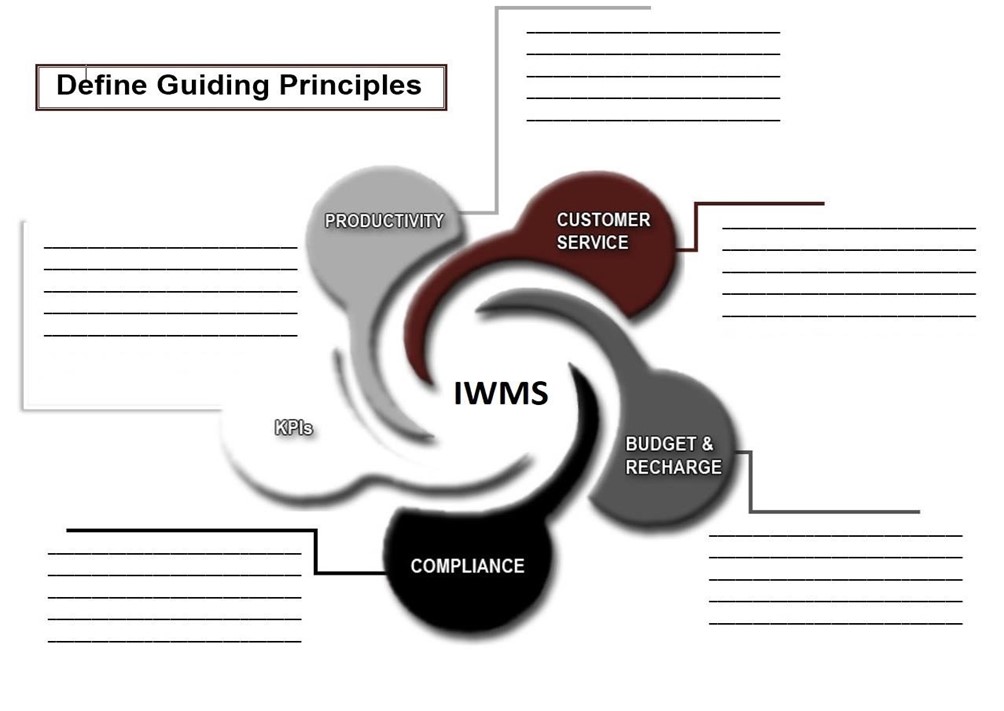
Feddersen: "They wanted to make sure that we were communicating with customers more:
(On Customer Service)
- Improved Email Communication:
One of the things that we didn't have in the system before was excellent email communication. Customers now receive information when a request is submitted, a work order is opened, and a work order is closed.
- Customer Single Point of Contact per Property for Maintenance Issues:
We also did not have an assigned manager. If a customer had a problem in a specific building,
we needed to ensure that a particular (Facilities) manager would be able to assist them.
- Customer Transparency:
We enhanced our customer portal and made it so customers can see their work requests, work orders, billed expenses, and statuses of all work requested. Customers can also view all open work for their properties, search for costs by account, and run detailed reports to reconcile expenses to the general ledger.
(On Budget and Recharge)
- Simplified Funding for Maintenance Services:
We have requested accounts from building owners for standard building expenses, life safety inspections, and other items covered in their Customer Service Agreements reviewed on an annual basis. We can provide account owners with additional reports if requested. This has cut down on the number of times we are delayed in work waiting on account numbers to be able to proceed.
- Track Budgets:
Budgets have helped because customers can see the standard expenses that they will incur on
an annual basis.
(On KPI's)
- Scorecard:
Ron created a scorecard to track the KPIs and to incorporate visual elements for success. Each department determined the thresholds for the performance indicators to help their shops improve and track success. Some are APPA standards, and some are internal metrics. Whenever it remains above the successful threshold metric, then it's green. If it falls within a warning range, it's yellow. And when the metric goes below the threshold, then it's red. That report is shared with Directors at FM and with Mr. Weaver. This gives a sense of purpose to the information the workers are recording. Because of the KPIs we're measuring, we are using the information to tell our story. There's a sense of responsibility and success. So, when they succeed, they're able to see it and be recognized for completing PM work. It's not just about being recognized for being the best at responding to a flood or other type of emergency. So, our use of KPIs is rewarding the right behavior and changing the culture".
Next week in part 3, we'll see how Jenelle and the OSU Facilities Team begin their execution of their developed plan for implementation.

